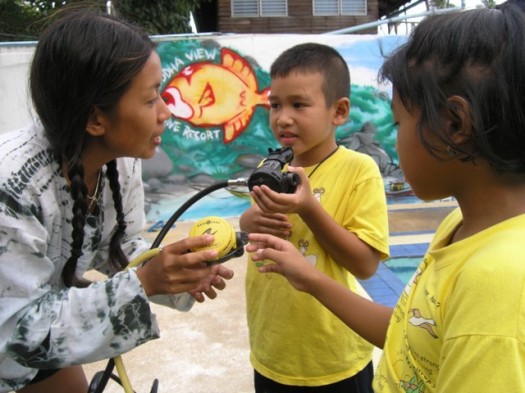
To get the most out of volunteers, start with plan
Target audience: Cause organizations, nonprofits, NGOs, volunteer centers, social enterprises.
Guest post by Susannah Vila
 If you’ve completed some successful social actions, chances are you have an opportunity to bring some new people onto your campaign or into your program.
If you’ve completed some successful social actions, chances are you have an opportunity to bring some new people onto your campaign or into your program.
Begin recruiting volunteers, but remember how important it is to have a plan for managing them.
Assess your needs
1First, take some time to assess the needs of your organization and how you could use the help of volunteers. What type of support are you looking for?
Direct-service volunteers provide hands-on services such as general office support, serving as translators, helping with events and soliciting donations. Skilled pro-bono volunteers are individuals or company employees volunteering their professional skills like Web design, accounting and marketing.
Decide on a length of engagement
2What type of commitment would you like volunteers to make. One time only? Ongoing? Draft a post and an email calling for volunteers and include a description of your organization or campaign and what the volunteer’s responsibilities would be, as well as the specific skills and time commitment needed. You can then use this post in various channels and social media outlets to recruit volunteers.
Inform people about your opportunities
3Check out the different tools and platforms available for sharing volunteer opportunities:
- Add your organization to Idealist and post listings for volunteer opportunities. Idealist is a well-established and respected platform “where people and organizations can exchange resources and ideas, locate opportunities and supporters, and take steps toward building a better world.”
- Create a profile on GOOD, which recently merged with Jumo.
- If you are in the United States, set up a profile on VolunteerMatch.
- Other sites that may be useful:
– Causecast
– Care2
– Do Something
– Changents
– All For Good
– Socialbrite’s directory of Cause organizations
Play around and see what sites you find easy to navigate and would best help and be most useful to your organization.
Tip! When adding pertinent information to your listing, it’s very important to add keywords because this is how people searching for opportunities will find your listing.
Examine your existing networks
4Before you join a slew of social networking platforms to post opportunities, look at your existing networks, online presence and Web strategy.
- Ask your friends and acquaintances. Personal requests are far more effective than anything else.
- Leverage existing Twitter and Facebook accounts to address your needs.
Your requests should be direct and clear about what type of volunteer help you need, such as “Looking for volunteers to help us at our upcoming event [about this cause] on [this date]. Can you help? E-mail us at [contact info]” or “Can you help us spread the word about our petition?”
Tip! Tap networks like church groups and unions, etc., to see if they want to do what you’re doing.
Craft an email marketing message
5Remember that e-mail blasts to your list of supporters are a great way to reach out and find volunteers. Check out our how-to guide on e-mail organizing for some best practices. Remember to craft a subject line and e-mail body that is clear and uses language encouraging recipients to take action (and volunteer). Make it clear that you are not soliciting for donations but rather that you are looking for your supporters’ help and expertise.

Promptly respond to inquiries
6Hopefully, people will see your postings and respond that they would like to volunteer with your group. Respond promptly to volunteer requests and provide additional information and details. Any time someone says they’ll help out, ask them if they’ve got any friends who might want to join too.
Screen volunteers
7Take the time to carefully interview and screen potential volunteers. Volunteers take up a lot of time for the coordinators, so have a careful screening process to help weed out the ones that aren’t likely to stay for long. If someone wants to volunteer, begin by meeting with them for 15-30 minutes to talk about the organization, learn what kinds of things they are interested in doing and determining if there is a good fit. The interview also gives you an opportunity to assess the needs of the volunteer and whether they might be more work than they are worth.
After the interview, send them away with a packet of information and ask them to call back soon if they are still interested in volunteering. This may select some out the people who would be poor fits out of the process.
Train your volunteers
8Once you have selected volunteers:
- Explain the vision, the plans and how they’ll be part of the team.
- Give volunteers new and greater responsibilities as they prove themselves over time.
- Have a plan in place for how you will train them.
Enlist a volunteer coordinator
9Devise a plan for who will be responsible for supervising volunteers and working on volunteer retention. This position is usually called a volunteer coordinator. Also invest in your best (capable and faithful) volunteers by rewarding them with extra amounts of training.
Don’t be afraid to ask someone to leave when they become significantly more work compared with what they contribute.

Image of volunteers at SF Goodwill by Greg Habiby (CC BY NC image).
Manage your volunteer base
10A key skill for any youth organization is to manage a high turnover of volunteers. This boils down to essentially good organization and records.
Many NGOs that are fortunate enough to have an office staffed by volunteers, keep a log of some sort by the reception/volunteer desk. The log is used as an ongoing record of who has phoned, what follow-up is required and what action has been taken. It is also used to take notes about what other jobs are in process and what still needs to be done. You can do this using Google Drive.
Make sure to include a column indicating who will do what and another to check off when a job has been completed. Along with the log, you should also maintain a manual for volunteers, complete with a series of relevant volunteer job descriptions. Written communications and good record-keeping can go a long way in keeping every volunteer informed about the latest developments and steering them in the right direction when they are wondering what needs to be done.
Clearly define volunteer roles
11It’s a good idea to assign each volunteer to a team and a clearly defined role. Job descriptions should include at minimum the following:
- Title
- Purpose
- Responsibilities (including reporting)
- Skills and knowledge required
- Required time commitment per week or month, location, benefits and a good job description
Sometimes additional resources are useful to attach to the job description, such as postering locations, message scripts, etc.
Bring volunteers together
12Hold events and gatherings for your volunteers. This way they meet the others, build friendships and feel part of a larger team.
Hold a volunteer meeting, bringing a group of volunteers together to learn a specific set of skills. For your own sake, try to schedule the training of volunteers together rather than individually. Of course, some volunteers play a very specialized role in the organization and will require one on one attention.
Hold a work party, similar a volunteer meeting except the goal is to accomplish a certain task. This is a great way to provide time for having fun with the people who care about the same things and also getting things done.

Creative Commons image on Flickr via Susan G. Komen
Recognize and reward
13Since they are not paid for their valuable contributions, recognition and rewards is an important aspect of volunteering for most people. Everyone wants to know that what they are doing is important, a critical component of the overall organizational goals, and it is the coordinator’s job to let them know. Always thank your volunteers. Again and again. Praise them when they do a good job. Write them nice thank-you notes. Whenever possible, thank them publicly — in your newsletter, on your web site, during your events. Give your volunteers titles. They’re free, they convey information about the volunteer’s role and they can be a source of pride for many volunteers.
Reward your volunteers when possible with small things like bus tickets, parking money, beautiful posters, T-shirts, presents and social events or parties.
Focus on recruitment
14Recruitment is an ongoing job for the volunteer coordinator – whenever someone expresses interest in your work, it’s an opportunity to recruit a volunteer. Other good places to recruit volunteers are at information tables, rallies, educational events, meetings and any time you’re speaking.
The sign-up sheet is a useful tool to use and should include at least a name, phone numbers, email address and interests.
Good luck with your volunteer program!
Related
• 7 tips to get more out of volunteering (BayAreaImpact.org)
 This work is licensed under a Creative Commons Attribution-NonCommercial-ShareAlike 3.0 Unported.
This work is licensed under a Creative Commons Attribution-NonCommercial-ShareAlike 3.0 Unported.








